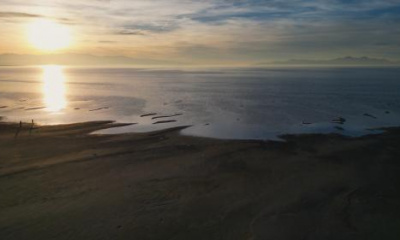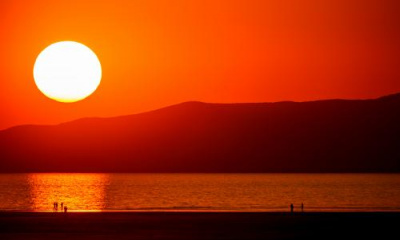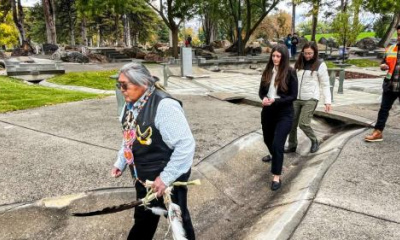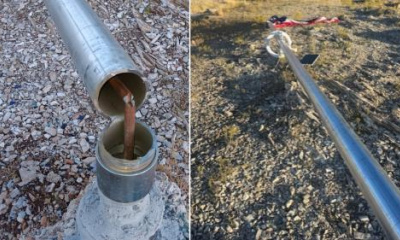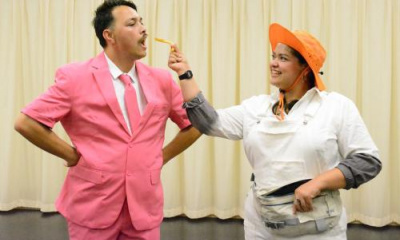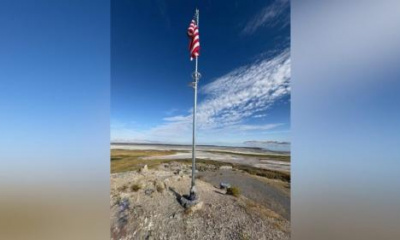SALT LAKE CITY — Art has the strength to ignite change and provide "optimism," Salt Lake City Mayor Erin Mendenhall contends.
Its power is why the city entered a nationwide competition seeking money to create a public art display regarding one of its biggest concerns at the moment: drought and the drying out of the Great Salt Lake, which reached an all-time low water level last year.
The Salt Lake City Arts Council's pitch to the Bloomberg Philanthropies Public Art Challenge, called "Wake the Great Salt Lake," is now coming to fruition. Bloomberg Philanthropies announced last week that Salt Lake City is one of eight cities that will receive $1 million to install temporary public art projects that spotlight social challenges.
The money will allow for the arts council to commission new public art installations within all seven of the city's council districts, as well as a piece along the border of the lake that will bring attention to the lake's decline. Mendenhall says it's a project that has the potential to "inspire" action.
"The opportunity for local artists and creators to harness their talents to encourage stewardship of the Great Salt Lake — the city's namesake and one of the most vital ecosystems in our region — is absolutely phenomenal," she said in a statement Thursday. "I look forward to seeing the creative vision of this work come to life."
It's the largest grant that the Salt Lake City Arts Council has ever received, according to Felicia Baca, the council's executive director. She said the primary objective is to collect the nation's top artists who will create pieces that "educate and inspire" residents and visitors, possibly leading to change and action at local and federal levels.
City officials add that the council has already created "initial partnerships" within the city's departments, as well as local nonprofits and artists, to help create the new artwork over the next two years. They say the project will include feedback from local Native American tribes, scientists and a wide range of community members as a part of what they call a "monumental and historically significant investment in public art" tied to the Great Salt Lake.
"(It) embraces many definitions of the word 'wake.' A wake is a time for reflecting on loss; to wake means regaining consciousness after a period of rest; and a wake is the turbulence created when one moves through water," Baca explained. "This project will employ the diverse languages of artistic expression to create ripples of consciousness through our community."
More than 150 cities across 40 states applied for the art grant in what was the third public art challenge of its kind, Bloomberg Philanthropies officials said. Atlanta, Baltimore, Honolulu, Houston, Orlando, Philadelphia and Phoenix also received new grants for art projects tackling various issues, ranging across all sorts of social issues.
In Salt Lake City's case, the Great Salt Lake remains a concern to many Utahns, especially because its decline in recent years has produced more dust storms and poses a threat to the region's ecosystem. Even though the lake gained several feet of water during the 2023 water year, its southern arm remains almost 6 feet below the lowest level that is still considered healthy and its northern arm is close to 9 feet below that level, according to U.S. Geological Survey data.
The Salt Lake City Arts Council project won't be the first time art will be used to highlight the lake's struggles. Craft Lake City approved 14 art pieces that were placed within downtown Salt Lake City last year, all of which highlighted either the lake's importance, history or the looming environmental impacts that its drying would create.
"I think a lot of us who have lived in Salt Lake for a number of years, we often forget we are so close to this beautiful body of water that is so unique," said Angela Brown, the organization's executive director, at the time the art pieces were unveiled. "It really is a very, very unique inland salty body of water — there's not that many of them in the world."


